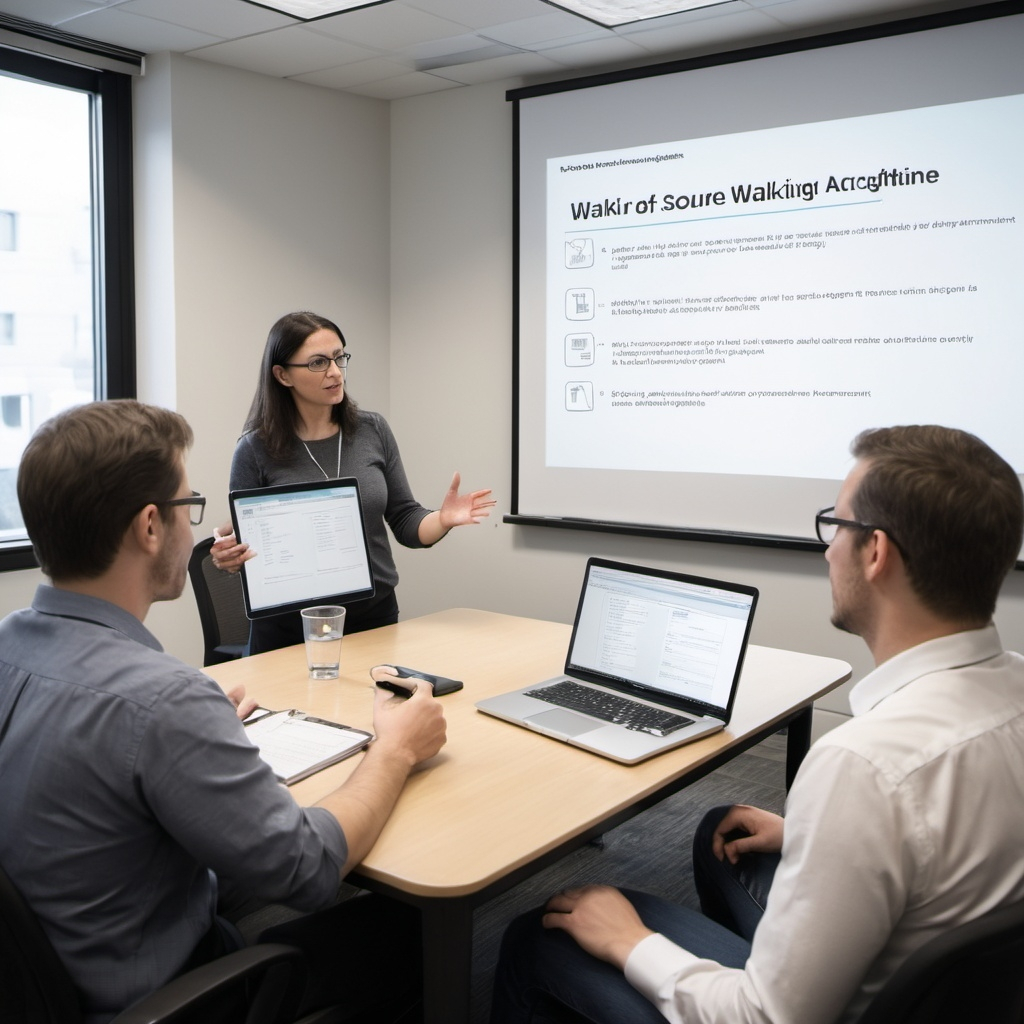A software walkthrough is a crucial peer review process in software development where a designer or programmer guides team members and stakeholders through a software product. This collaborative exercise involves participants asking questions, commenting on potential errors, and discussing deviations from development standards. Let’s delve deeper into the intricacies of software walkthroughs and their significance in the development lifecycle.
The Purpose and Benefits of Software Walkthroughs
Software walkthroughs serve multiple purposes, all contributing to the enhancement of the software development process and the final product’s quality. Here are some key reasons why software walkthroughs are conducted:
- Early Error Detection: Walkthroughs help identify and rectify errors in the early stages of the Software Development Life Cycle (SDLC), saving time and resources.
- Quality Assurance: They ensure that the software aligns with specific quality standards, guidelines, and best practices.
- Knowledge Sharing: Walkthroughs foster communication and collaboration among team members, ensuring everyone understands the software’s design, code, and functionality.
- Continuous Improvement: They promote a culture of ongoing enhancement by identifying areas for improvement in the software development process.
- Stakeholder Feedback: Walkthroughs provide an opportunity to gather feedback on the technical quality and content of the software from various stakeholders.
The Walkthrough Process: A Step-by-Step Guide
The software walkthrough process is typically initiated by the code’s author and follows these steps:
- Preparation: The author prepares the material to be reviewed, which could include code, design documents, or user interfaces.
- Participant Selection: Relevant team members and stakeholders are invited to participate in the walkthrough.
- Presentation: The author guides participants through the software, explaining its features, functionalities, and underlying architecture.
- Discussion: Participants ask questions, provide feedback, and discuss potential issues or improvements.
- Documentation: Notes are taken throughout the process, recording key points, observations, and suggestions.
- Follow-up: After the walkthrough, the author addresses the feedback and makes necessary improvements.
It’s important to note that software walkthroughs are informal and do not involve formal authority, making them a flexible and collaborative approach to software testing and review.
When and Where to Conduct Software Walkthroughs
Software walkthroughs are beneficial at various stages of the SDLC:
- During requirements gathering to clarify ambiguities
- When reviewing software architecture and design
- For source code review
- As part of the software testing process
- When reviewing software documentation
- During onboarding and knowledge transfer
These walkthroughs can be conducted in various settings, including:
- Physical meeting rooms or conference rooms
- Virtual meetings for remote teams
- Within development environments
- Dedicated review sessions
- Testing environments
The flexibility in location and timing makes software walkthroughs adaptable to different team structures and working environments.
Challenges and Best Practices in Software Walkthroughs
While software walkthroughs offer numerous benefits, they also come with challenges:
- Time Consumption: Walkthroughs can be time-intensive, especially for complex software.
- Scheduling Conflicts: Coordinating all necessary participants can be difficult.
- Human Error: Manual reviews are prone to oversight and inconsistencies.
- Scalability Issues: Walkthroughs may not be suitable for very large projects.
- Limited Scope: They may not uncover deep-rooted or systemic problems in software architecture.
To mitigate these challenges and maximize the effectiveness of software walkthroughs, consider these best practices:
- Clearly define objectives and scope before the walkthrough
- Ensure all participants are well-prepared
- Schedule walkthroughs at convenient times for all participants
- Encourage active participation and open communication
- Document feedback and suggestions thoroughly
- Foster a culture of constructive criticism and continuous improvement
The Future of Software Walkthroughs in an Evolving Tech Landscape
As the software development landscape continues to evolve, so too will the practice of software walkthroughs. We can expect to see:
- Integration with AI and Machine Learning: AI-powered tools may assist in identifying potential issues during walkthroughs, enhancing human capabilities.
- Virtual Reality Walkthroughs: VR technology could provide immersive environments for conducting walkthroughs, especially for complex systems or user interfaces.
- Automated Walkthrough Assistants: Software may guide participants through walkthroughs, ensuring consistency and thoroughness.
- Enhanced Remote Collaboration Tools: As remote work becomes more prevalent, we’ll see more sophisticated tools for conducting effective virtual walkthroughs.
Despite technological advancements, the core principle of software walkthroughs – collaborative review and improvement – will remain crucial in ensuring software quality and team alignment.
The Enduring Value of Software Walkthroughs
Software walkthroughs remain a valuable tool in the software development toolkit. They foster collaboration, improve software quality, and promote a culture of continuous improvement. While they come with challenges, the benefits far outweigh the drawbacks when implemented effectively. As we move forward in an increasingly digital world, the ability to conduct thorough, collaborative reviews of software will only grow in importance. By embracing and refining the practice of software walkthroughs, development teams can build more robust, user-friendly, and efficient software solutions.

Explore TechTalent: Elevate Your Tech Career
Certify Skills, Connect Globally
TechTalent certifies your technical skills, making them recognized and valuable worldwide.
Boost Your Career Progression
Join our certified talent pool to attract top startups and corporations looking for skilled tech professionals.
Participate in Impactful Hackathons
Engage in hackathons that tackle real-world challenges and enhance your coding expertise.
Access High-Demand Tech Roles
Use TechTalent to connect with lucrative tech positions and unlock new career opportunities.
Visit TechTalent Now!
Explore how TechTalent can certify your skills and advance your tech career!
